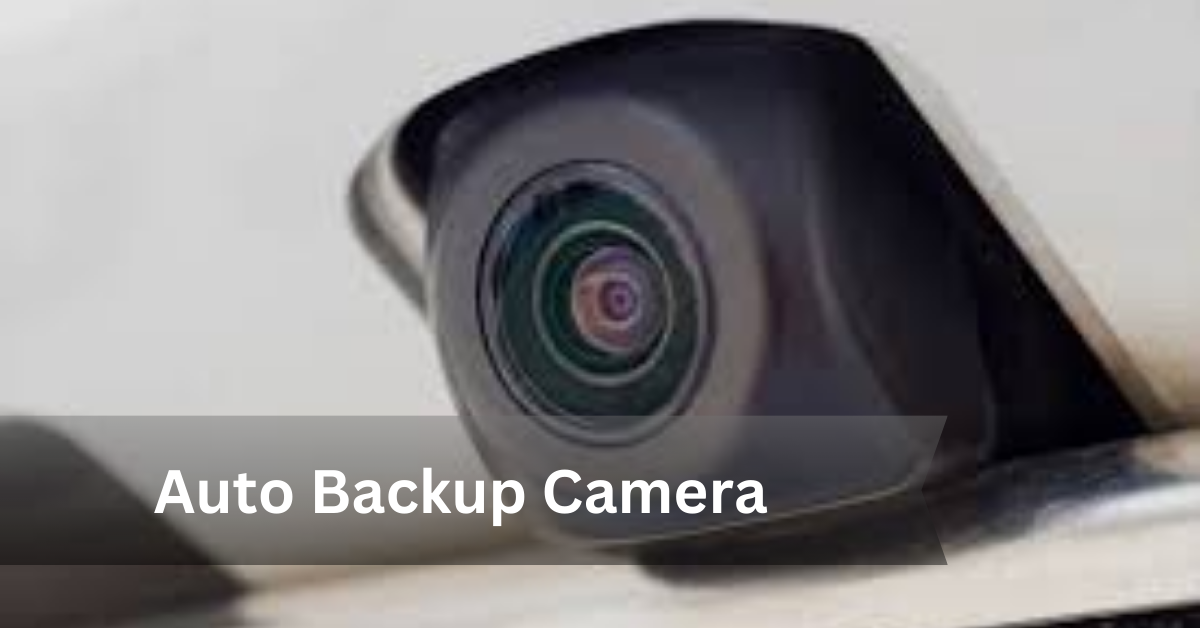Ever struggled to reverse your car without hitting something? Whether it’s navigating a tight parking spot or avoiding unseen obstacles, backing up can be a nerve-wracking part of driving. That’s where auto backup cameras come in.
Once considered a luxury, backup cameras are now a must-have for modern drivers. They offer more than just a rear view—they bring safety, precision, and peace of mind to your daily drive. From helping you spot small children or pets behind your vehicle to assisting with parallel parking in busy city streets, these cameras are designed to make reversing safer and smarter.
And the benefits go far beyond convenience. Auto backup cameras reduce the risk of accidents, prevent costly repairs, and are even required by law in many newer vehicles.
In this guide, we’ll walk you through everything you need to know Auto backup camera.
Let’s back into the world of smarter, safer driving.
What Is an Auto Backup Camera?
An auto backup camera, also known as a rearview camera or reverse camera, is a small camera mounted on the back of your vehicle that activates automatically when you shift into reverse. Its purpose? To give you a clear view of what’s directly behind your car also works as a car security camera—something your rearview mirror alone can’t always show.
How Does It Work?
When you put your car in reverse, the backup camera sends a live video feed to a screen inside your vehicle. This display is usually integrated into your dashboard, rearview mirror, or a dedicated monitor, depending on the system you use. Some cameras also include guidelines or sensor overlays to help you judge distance and avoid obstacles with greater accuracy.
Most systems today use a wide-angle lens, giving drivers a broad, fish-eye view of the rear area—covering blind spots that are typically invisible.
Common Types of Backup Cameras
To match different vehicles and user needs, backup cameras come in a few main styles:
1. Wired Backup Cameras
- Directly connected to your car’s display via a physical wire.
- Known for stable video quality and zero lag.
- Ideal for permanent installation on personal vehicles, RVs, and trucks.
2. Wireless Backup Cameras
- Transmit video via a wireless signal (usually 2.4GHz).
- Easier to install, especially for DIYers or renters.
- Slightly more prone to interference, but modern models have improved performance.
3. License Plate-Mounted Cameras
- Discreetly installed in or near the license plate frame.
- Popular for their sleek look and central rear-view positioning.
- Can be found in both wired and wireless versions.
4. Dashboard Display Kits
- Include a separate monitor if your vehicle doesn’t have a built-in screen.
- Great for older cars or aftermarket setups.
- Some include features like touchscreen control, split-screen viewing, or DVR recording.
Why Every Driver Needs an Auto Backup Camera
If you’ve ever had a close call while reversing, you’re not alone. Backup cameras have become essential for safer, more confident driving—and for good reason. Here’s why adding one to your vehicle is a smart move:
Enhanced Safety
Auto backup cameras dramatically reduce the chances of backing into people, pets, or objects hidden in your blind spots.
- Prevent accidents by getting a real-time view of what’s directly behind your car.
- Spot children or pets who may suddenly run behind your vehicle.
- Reduce the risk of property damage when reversing in tight areas or crowded neighborhoods.
Easier Parking
Whether you’re squeezing into a parallel spot downtown or backing into a driveway, a backup camera makes parking simpler and less stressful.
- Perfect for larger vehicles like SUVs, trucks, and RVs, where rear visibility is often limited.
- Many systems include guidelines, alerts, or parking sensors to help you align perfectly every time.
- Say goodbye to parking guesswork—especially in narrow garages or tight parking lots.
Legal Requirements
In many countries, backup cameras are no longer optional—they’re the law.
- In the United States, all new vehicles manufactured since May 2018 must include a rear visibility system.
- Other regions, like Canada, the EU, and Australia, are implementing similar regulations to boost road safety.
- Installing a backup camera on an older car can help future-proof your vehicle and align with legal safety standards.
Top 7 Auto Backup Cameras of 2025
1. AUTO-VOX CS2 Wireless Backup Camera
A hassle-free, wireless solution that’s easy to install and perfect for compact vehicles. Offers decent clarity and adjustable parking lines.
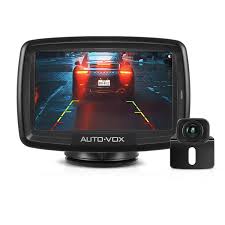
- Type: Wireless
- Resolution: 480p
- Viewing Angle: 110°
- Monitor: 4.3″ LCD
- Waterproof Rating: IP68
- Price: ~$120
- User Rating: 4.5/5
- Pros:
- Simple installation with suction mount
- Reliable digital signal with minimal interference
- Adjustable parking lines for tailored guidance
- Cons:
- Lower resolution compared to HD models
- Smaller screen size may not suit all users
- Best For: Drivers seeking a reliable, easy-to-install wireless system for compact vehicles.
2. eRapta ERT01 Wired Backup Camera
An ultra-affordable, wired option with great waterproofing and solid night vision. Ideal for budget-conscious drivers who don’t mind a bit of DIY.
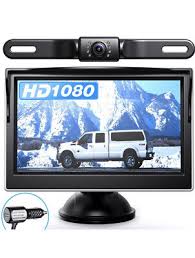
- Type: Wired
- Resolution: 720p
- Viewing Angle: 149°
- Monitor: Not included
- Waterproof Rating: IP69
- Price: ~$25
- User Rating: 4.6/5
- Pros:
- Budget-friendly with high-quality image
- Excellent night vision capabilities
- Durable and weather-resistant design
- Cons:
- Requires separate monitor purchase
- Wired installation may be complex for some users
- Best For: Budget-conscious drivers looking for a durable and high-performing wired camera.
3. Furrion Vision S Wireless Backup System
A premium wireless backup system tailored for RVs and trailers, delivering long-range signal stability and anti-glare display.

- Type: Wireless
- Resolution: 720p
- Viewing Angle: 120°
- Monitor: 4.3″ Anti-glare
- Waterproof Rating: IP65
- Price: ~$400
- User Rating: 4.7/5
- Pros:
- Stable signal with long-range capability
- Anti-glare monitor enhances visibility
- Ideal for larger vehicles like RVs and trailers
- Cons:
- Higher price point
- May be overkill for smaller vehicles
- Best For: RV and trailer owners needing a robust, long-range wireless system.
4. LeeKooLuu LK3 Wired Backup Camera
High-resolution 1080p visuals with a wide viewing angle in a cost-effective package. Best for those wanting HD clarity in a wired setup.

- Type: Wired
- Resolution: 1080p
- Viewing Angle: 150°
- Monitor: 4.3″ LCD
- Waterproof Rating: IP69
- Price: ~$70
- User Rating: 4.5/5
- Pros:
- High-definition image quality
- Wide viewing angle covers more area
- Affordable price with included monitor
- Cons:
- Wired setup may require professional installation
- Monitor size may be small for some users
- Best For: Drivers seeking a high-quality wired system with a wide field of view.
5. Yada RoadCam 4K UHD Smart Dash Cam
A compact and tech-forward camera offering stunning 4K resolution and smart features, great for modern car owners who want advanced quality.
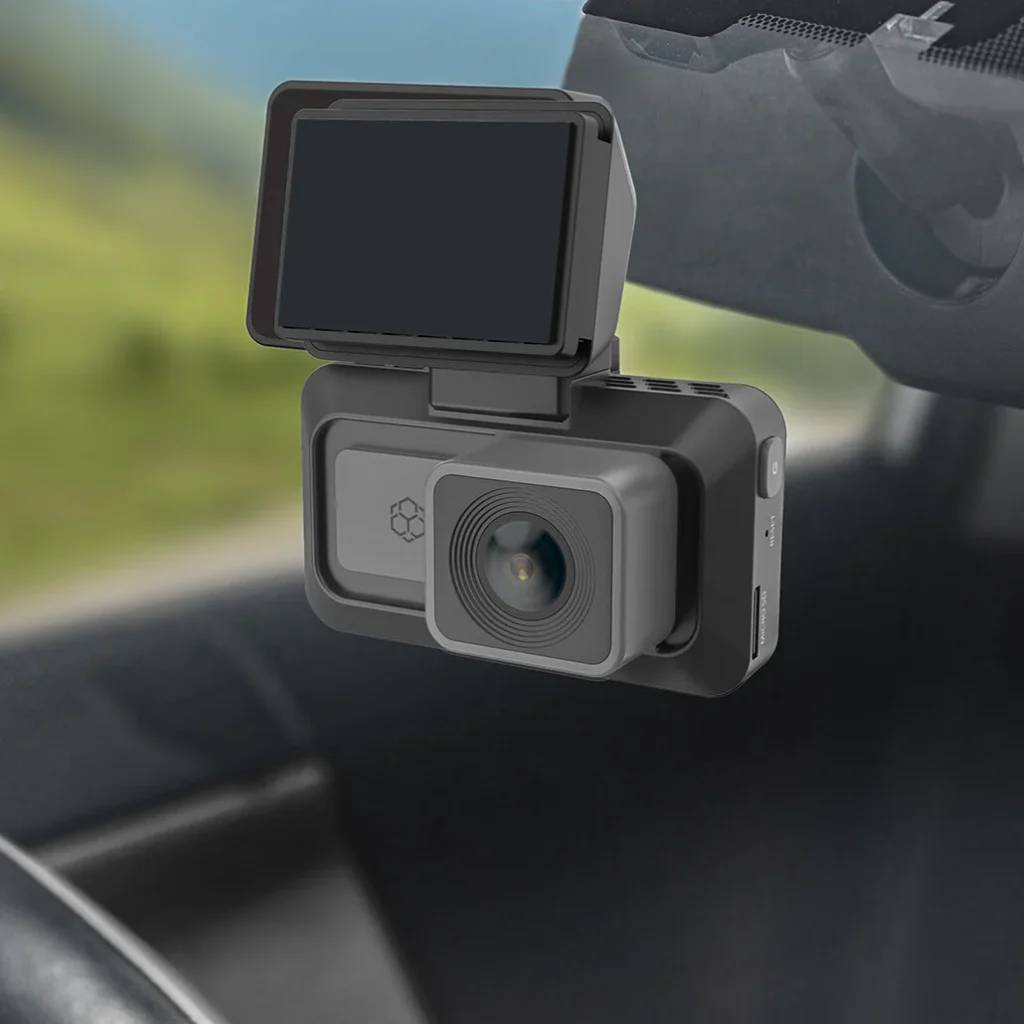
- Type: Wireless
- Resolution: 4K UHD
- Viewing Angle: 150°
- Monitor: 3″ Screen
- Waterproof Rating: IP67
- Price: ~$150
- User Rating: 4.4/5
- Pros:
- Ultra-high-definition video quality
- Compact design with smart features
- Good low-light performance
- Cons:
- Smaller screen may not suit all preferences
- Higher price point for budget-conscious buyers
- Best For: Tech-savvy drivers wanting high-resolution footage and smart features.
6. AUTO-VOX TW1 Truly Wireless Backup Camera
A 100% wire-free camera powered by rechargeable batteries. Quick to install and move between vehicles—no wiring required.
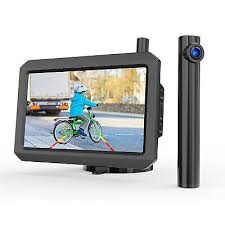
- Type: Wireless (Battery-powered)
- Resolution: 720p
- Viewing Angle: 120°
- Monitor: Not included
- Waterproof Rating: IP68
- Price: ~$100
- User Rating: 4.3/5
- Pros:
- Completely wireless with magnetic mount
- Easy to install and transfer between vehicles
- Rechargeable battery offers flexibility
- Cons:
- Requires regular charging
- Monitor not included
- Best For: Users seeking a portable, wire-free solution for multiple vehicles.
7. AMTIFO A7 HD 1080P Digital Wireless Backup Camera
A rugged and feature-rich wireless camera with a big 7″ monitor—great for trucks and RVs needing a robust, full-HD setup.

- Type: Wireless
- Resolution: 1080p
- Viewing Angle: 150°
- Monitor: 7″ LCD
- Waterproof Rating: IP69K
- Price: ~$180
- User Rating: 4.6/5
- Pros:
- Large, clear display ideal for larger vehicles
- High-definition video with wide viewing angle
- Strong waterproofing for all-weather use
- Cons:
- Installation may be complex for some users
- Higher price point
- Best For: Truck and RV owners needing a large display and robust performance.
Comparison Table
| Model | Type | Resolution | Viewing Angle | Monitor | Waterproof | Price | Best For |
| AUTO-VOX CS2 | Wireless | 480p | 110° | 4.3″ | IP68 | ~$120 | Compact vehicles |
| eRapta ERT01 | Wired | 720p | 149° | No | IP69 | ~$25 | Budget-conscious drivers |
| Furrion Vision S | Wireless | 720p | 120° | 4.3″ | IP65 | ~$400 | RVs and trailers |
| LeeKooLuu LK3 | Wired | 1080p | 150° | 4.3″ | IP69 | ~$70 | Wide field of view seekers |
| Yada RoadCam 4K | Wireless | 4K UHD | 150° | 3″ | IP67 | ~$150 | Tech-savvy drivers |
| AUTO-VOX TW1 | Wireless | 720p | 120° | No | IP68 | ~$100 | Portable, wire-free solution |
| AMTIFO A7 HD | Wireless | 1080p | 150° | 7″ | IP69K | ~$180 | Trucks and RVs |
Choosing the right auto backup camera depends on your specific needs, vehicle type, and budget. Whether you prioritize high-resolution video, ease of installation, or affordability, there’s an option tailored for you.
For a visual overview and further insights, check out this detailed video review:
Wired vs Wireless Backup Cameras
When selecting an auto backup camera, one of the most important decisions is choosing between a wired or wireless setup. Each option offers unique advantages depending on your vehicle type, installation preferences, and budget.
Wired Cameras – Stable Signal, Best for Permanent Installs
Pros:
- Reliable video transmission with no interference or lag.
- Ideal for high-resolution feeds such as 1080p and 2K.
- Generally more cost-effective for the same image quality.
Cons:
- Installation involves routing cables through your vehicle, which may require professional help.
- Not suitable for temporary installations or rental vehicles.
Best for: Truck owners, long-term vehicle users, and those seeking a stable, permanent solution.
Wireless Cameras – Easier DIY Install, Great for Temporary Setups
Pros:
- Quick installation without the need for extensive wiring.
- Convenient for renters or drivers who frequently switch vehicles.
- Battery-operated and solar-powered options are available.
Cons:
- Susceptible to signal interference, especially in larger or metal-framed vehicles.
- Can be pricier for the same performance level compared to wired models.
Best for: Renters, casual drivers, or anyone looking for a flexible, plug-and-play solution.
Key Features to Look For
To ensure you’re getting the best value and performance, here are the essential features to consider when buying an auto backup camera:
Video Quality (720p vs 1080p vs 2K)
- 720p: Basic resolution for general use.
- 1080p: Offers sharper, more detailed video, helpful for detecting smaller objects.
- 2K and above: Ultra-clear images, often paired with premium wide-angle lenses.
Recommendation: Go with at least 1080p for larger vehicles or high-traffic parking situations.
Night Vision
- Uses infrared LEDs or advanced sensors to ensure visibility in low-light conditions.
- Crucial for night driving, underground garages, and poor weather environments.
Field of View
- Wide-angle lenses (typically 140 to 170 degrees) help reduce blind spots.
- Note: Extremely wide lenses (180 degrees or more) can cause distortion at the edges.
Display Type
- Mirror-Mount Displays: Integrate into or replace your rearview mirror—minimal and convenient.
- Dashboard Monitors: Standalone displays for clear and larger visuals.
- App-Based Viewing: Utilizes your smartphone for real-time video via a companion app—common with wireless models.
Weatherproof Ratings (IP67/IP69)
- IP67: Protects against dust and water immersion—suitable for standard driving conditions.
- IP69: Withstands high-pressure water and extreme weather—ideal for rugged or off-road environments.
Tip: Always verify the IP rating if the camera will be mounted near the rear bumper or license plate.
How to Install a Backup Camera (Step-by-Step)
Installing a backup camera can significantly improve your driving safety, and with the right tools and guidance, it’s a manageable project—even for beginners. Below is a breakdown of the tools, installation methods, and safety tips to help you get started.
Tools You Need
- Screwdriver set (Phillips and flathead)
- Wire strippers/crimpers
- Power drill (for bumper or in-dash installs)
- Electrical tape or heat shrink tubing
- Zip ties for cable management
- Multimeter (for testing power connections)
- Video monitor (if not included with the kit)
Installation Options
1. License Plate Mount
- Most common and easiest DIY option.
- Camera attaches directly to the top or bottom of your rear license plate.
- Minimal drilling required.
2. Bumper Mount
- Camera is embedded into or just above the rear bumper.
- Requires drilling and wiring through the bumper, offering a clean, factory-like look.
3. In-Dash Display Integration
- More advanced, often requires removing interior panels.
- Integrates the feed with your car’s infotainment or a separate dashboard screen.
Note: Some models support mirror-mount displays that auto-switch when the vehicle is in reverse.
Safety Tips
- Disconnect the car battery before starting the installation.
- Use grommets or rubber seals when routing cables through metal to prevent wear or shorting.
- Avoid routing cables near high-heat engine areas or moving parts.
- Double-check your reverse light connection—this powers the camera when you shift into reverse.
- Test the camera before finalizing the cable placements.
Here are helpful video tutorials for different types of backup camera installations:
- License Plate Camera Install (Wired):
A comprehensive step-by-step guide to installing a wired license plate backup camera.
Watch here: How to Install a Rear View Backup Camera | Step by Step - Wireless Backup Camera Install:
This detailed tutorial teaches how to install a wireless backup camera on any car or truck.
Watch here: How to install Wireless Backup camera on any Car or Truck - Bumper Flush Mount Camera Install:
Follow this video for a complete installation process of a flush mount backup camera in the bumper.
Watch here: Rear View Parking Camera Full Install Process Step by Step - Connect to Rearview Mirror Display:
This tutorial demonstrates how to connect your backup camera to a rearview mirror display.
Watch here: How to install a backup camera in your car | Crutchfield video
These tutorials provide clear instructions and visuals to assist you in installing various types of backup cameras.
Best Backup Cameras for Specific Use Cases
Choosing the right auto backup camera depends on your vehicle type and driving needs. Here are the top picks for various use cases in 2025:
Best for Sedans
Garmin BC 50 with Night Vision
Compact, discreet, and easily integrates with most dashboards or Garmin GPS units. Great for urban parking and tight spaces.
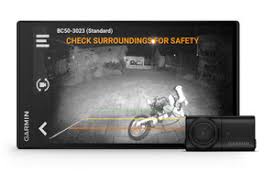
Best for Trucks & SUVs
AUTO-VOX CS-2 Wireless Backup Camera
With a large field of view and long wireless range, it’s built for vehicles with bigger blind spots.
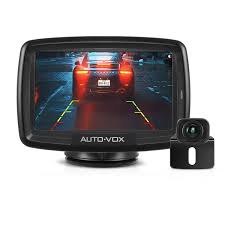
Best for RVs & Campers
Haloview RD7 Wireless RV Backup Camera System
Designed for long-distance wireless transmission and rugged use, with a 7” display and multi-camera support.

Best Budget Pick Under $50
eRapta ERT01 Backup Camera
Reliable performance for less, featuring waterproofing and night vision—ideal for simple rear-view coverage.

Best for Night Driving
LeeKooLuu LK3 HD Backup Camera
Features enhanced night vision and anti-glare display, great for low-light areas and night commuting.

Real-World Feedback
Here’s what actual users have to say about today’s top-rated backup cameras:
Reddit – r/Cartalk:
“Installed the AUTO-VOX CS-2 on my truck—no more blind spots. The install took about an hour, and the image quality is surprisingly good for wireless.”
Amazon Review – Haloview RD7:
“Perfect for our RV. The wireless signal is stable even when towing. Setup was easy, and we love the split-screen view for side cams.” – ★★★★☆
YouTube Comment – LeeKooLuu LK3:
“Night driving used to be a nightmare, now it’s easy to reverse out of my driveway with confidence.”
Pros Based on Feedback:
- Reliable signal (wired & quality wireless models)
- Easy installation kits included
- Great night vision and wide viewing angles
Cons Noted by Users:
- Some budget models may lag in wet weather
- Wireless signal drops in older vehicles with thick metal frames
- Dash display glare in direct sunlight
Where to Buy Backup Cameras
These are the top platforms users trust for purchasing auto backup cameras in 2025:
Amazon
- Best for: Fast delivery, huge variety, verified buyer reviews
- Why users prefer it: Easy returns, regular discounts, Prime support
Best Buy
- Best for: Professional installation via Geek Squad
- Why users prefer it: In-store pickup, expert advice
Walmart
- Best for: Budget-friendly bundles
- Why users prefer it: Local access, often cheaper than competitors
Brand Websites
- Best for: Exclusive deals, warranty coverage, direct support
- Top sites:
- Dual Electronics – e.g., Universal BUCAM200 ($29.99)
- Audio Express – Competitive pricing on car-specific cams
- Car Toys – Wide selection, quality brand options (Alpine, Voxx)
- Stinger – High-end and aftermarket gear (4.5 star rating)
- Momento – Specializes in parking systems and 360° views
- Custom Sounds – Deals on OEM-fit and LED-integrated models
Queries on Auto Backup Cameras
Wireless Auto Backup Camera
Wireless backup cameras transmit video signals without needing physical cables between the camera and the monitor. They’re ideal for DIY installations and rentals, offering flexibility, fast setup, and fewer wiring hassles. However, they may experience interference if not properly installed.
Auto Backup Camera App
Some modern backup cameras come with smartphone app integration. These apps allow live viewing, video recording, and parking assistance directly on your phone. Popular models like the Auto-Vox V5 and LeeKooLuu LK10 support Android and iOS apps via Wi-Fi or Bluetooth.
Backup Camera for Car Installation
Installation options vary based on the camera type:
- Wired systems require running video cables through the car to a display.
- Wireless systems are easier to install and great for beginners. You can mount cameras on license plates, bumpers, or integrated into tail lights. Professional installation is available at stores like Best Buy and Car Toys.
Backup Camera with Monitor
These systems include both a rear camera and a display unit (either a dash-mounted screen or a mirror monitor). Ideal for vehicles without a built-in screen, popular models include:
- Fookoo FHD1
- DoHonest V25
- LeeKooLuu LK3
Best Auto Backup Camera
As of 2025, some top-rated models include:
- Auto-Vox V5 Pro+ (wireless, touchscreen)
- Furrion Vision S (great for RVs)
- Garmin BC 50 (premium build + app integration)
Each offers high-resolution video, night vision, and wide-angle views.
Best Backup Camera with Night Vision
Look for models with infrared LEDs or low-light sensors:
- eRapta ERT01 (affordable, clear IR night view)
- LeeKooLuu LK10 (dual-channel, 1080p night vision)
- DoHonest V25 (wireless + excellent low-light performance)
Backup Camera Bluetooth
Bluetooth-enabled cameras connect directly to your smartphone or display monitor wirelessly. However, Bluetooth typically has shorter range and lower video quality than Wi-Fi. Check compatibility before purchase. Recommended: Auto-Vox Solar1 Pro, Boslla Wireless Camera.
Backup Camera License Plate
License plate cameras are the most common and easiest to install. They mount on or above the rear license plate and provide a direct rear view. Notable models:
- eRapta ERT01
- DoHonest V25
- LeeKooLuu LK3
Premium Aftermarket Backup Camera
If you’re looking for premium features (2K video, night vision, dynamic parking lines, etc.), top aftermarket options include:
- Garmin BC 50
- Furrion Vision S
- Auto-Vox V5 Pro
These offer durability, wide-angle lenses, and seamless integration with infotainment systems or standalone monitors.
Which Backup Camera Are You Having Success With?
User reviews highlight high satisfaction with:
- DoHonest V25 – “Easy install and clear video, great for the price.”
- Furrion Vision S – “Perfect for RVs, no lag.”
- Auto-Vox Solar1 Pro – “Love the solar power, works flawlessly.”
Check Reddit threads and Amazon reviews for more personal experiences.
How Do I Make My Car Backup Camera Automatically Turn On?
Most backup cameras auto-activate when the vehicle shifts into reverse. To ensure this:
- Connect the camera’s power wire to the reverse light circuit.
- For wireless models, pair the monitor to auto-switch input based on signal.
- Use a relay or smart switch if installing a camera on older vehicles.
FAQ’s on Auto backup Camera
Do wireless backup cameras work?
Yes, wireless backup cameras work effectively—especially newer models with enhanced signal stability. They transmit video from the rear camera to a display unit using Wi-Fi or proprietary signals, eliminating the need to run cables through your vehicle. While older wireless models sometimes experienced lag or interference, today’s top-rated wireless cameras like the Auto-Vox Solar1 Pro and DoHonest V25 offer reliable performance even in urban environments.
Can I install a backup camera in my car?
Absolutely. Whether your car is old or new, you can install a backup camera. There are two main types:
- Wired cameras (require more installation effort but provide stable performance).
- Wireless cameras (easier to install, ideal for DIYers). Installation typically involves mounting the camera on the license plate or bumper and connecting it to a monitor or app. Many users opt for plug-and-play kits or professional installation at places like Best Buy or Car Toys.
What is the difference between a backup camera and a reverse camera?
There is no technical difference—both terms are used interchangeably. They refer to a rear-facing camera that activates when the car is in reverse to help drivers see what’s behind them. Some brands use “reverse camera” while others say “backup camera,” but they serve the same function.
Which is better: wired or wireless backup camera?
It depends on your needs:
- Wired backup cameras offer more stable video quality and are ideal for permanent installs, especially on larger vehicles or trucks.
- Wireless backup cameras are easier to install and are best for temporary setups, rentals, or users who prefer DIY solutions.
If you’re seeking zero lag and maximum clarity, wired is generally better. If convenience is your priority, go wireless.
Which is better: backup sensor or camera?
Both serve different purposes:
- Backup sensors use ultrasonic detection to beep when you’re close to an object.
- Backup cameras give you visual confirmation, helping spot people, pets, or smaller obstacles.
Best setup? A combination of both. However, if you must choose one, a backup camera is more versatile and provides clearer situational awareness.
Where is the best place to put a backup camera?
The ideal location is above or near the license plate, centered for a symmetrical rear view. Other mounting options include:
- Bumper flush mount for a factory look
- Tailgate handle (for trucks)
- Third brake light for a top-down view on vans or RVs
Always ensure the camera has a clear line of sight and isn’t obstructed.
What are the disadvantages of parking sensors?
While useful, parking sensors have some drawbacks:
- No visual feedback – can’t tell what the obstacle is
- False alarms from puddles, curbs, or low objects
- Limited coverage area compared to cameras
They’re best used alongside a backup camera for full confidence while reversing.
Is it worth installing a reverse camera?
Yes—100% worth it. A reverse camera enhances safety, reduces blind spots, and makes parking easier—especially in tight spaces. They help avoid accidents, protect pedestrians, and can even reduce insurance costs. Most new vehicles come with them as standard, but even older cars benefit from aftermarket systems.
Conclusion
Auto backup cameras are now essential for safer, smarter driving—whether you’re a beginner or a seasoned driver.
Choose the model that fits your needs and enjoy stress-free reversing. Ready to find your perfect backup cam? Explore our top picks now.

